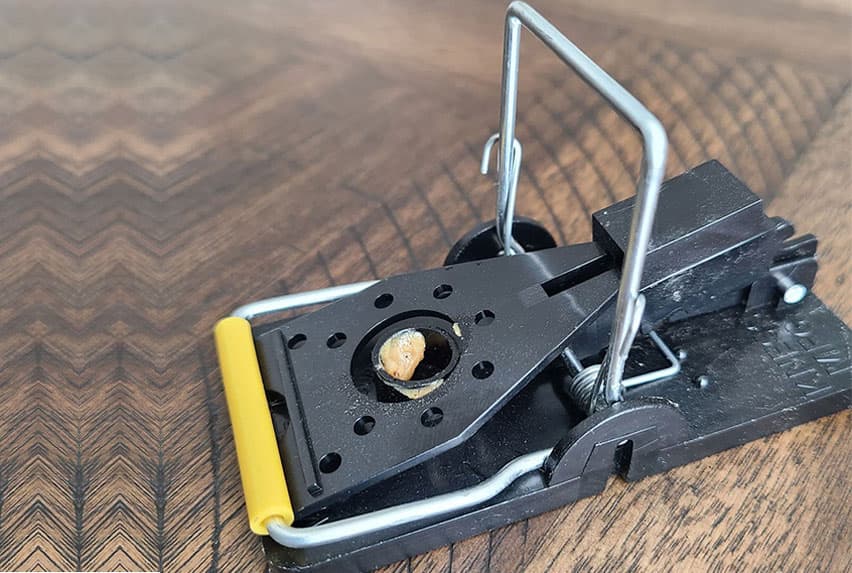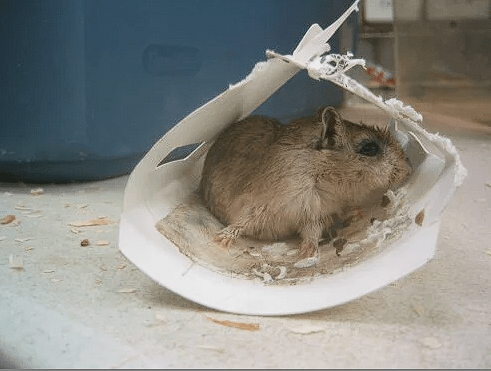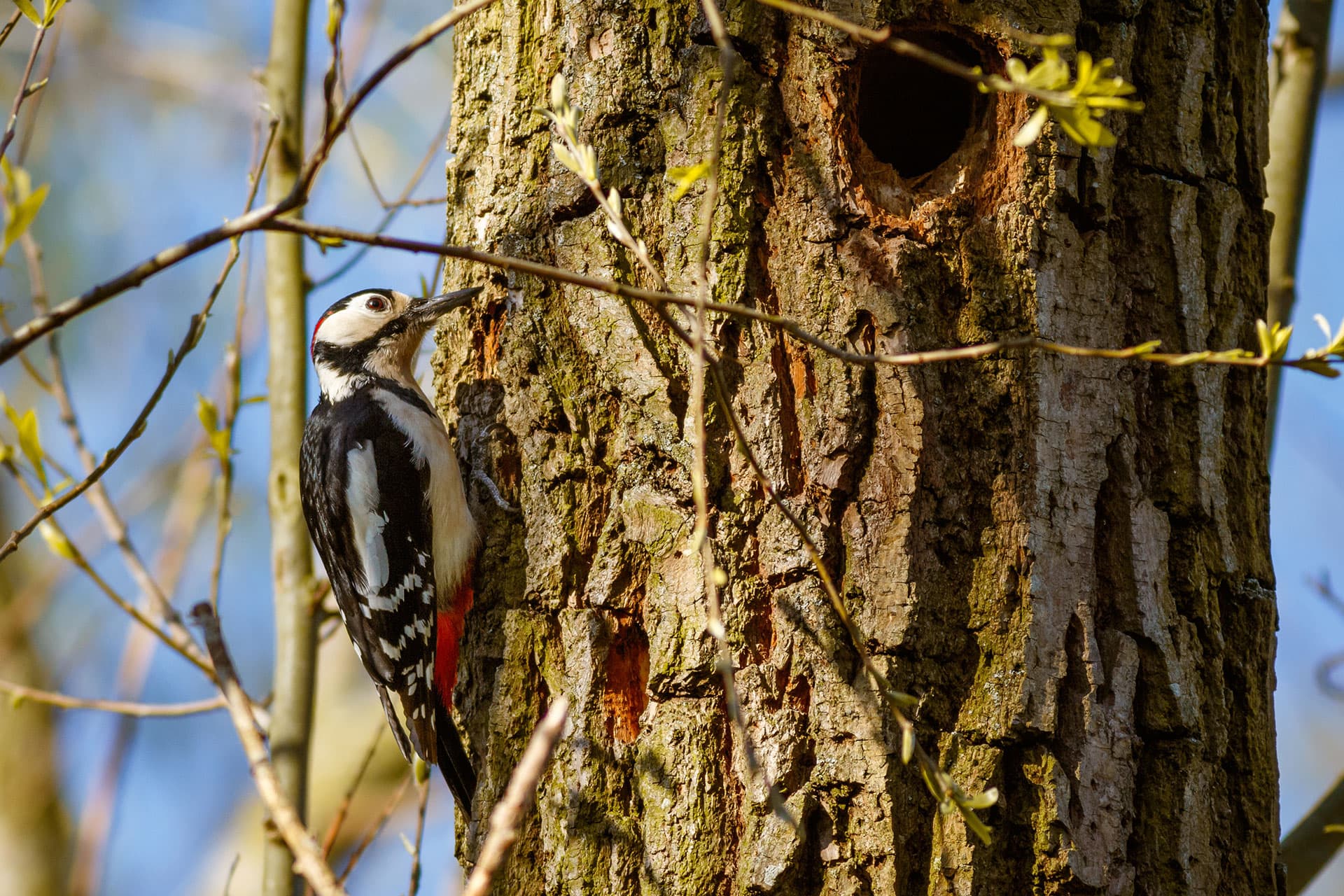How to Trap Mice in Your Home
OK, that is definitely mouse poop…
And what was that?? Did something just run across the floor!?
Yes… it’s mice. And probably not just one.
(I recommend reading my articles on how to find mouse entry points and how to clean your house for mouse control before continuing)
Mice are prolific breeders, and pregnant mice love to find new places to go to raise their young. If you have noticed a mouse in your house, or mouse droppings, you need to take care of it as soon as possible. It would be inhumane to allow them to breed and multiply in your house, because if you wait too long, you’ll have to kill three times as many mice.
So what can be done? If you haven’t already, make sure to read my blog posts on finding mouse entry points and cleaning your home for mice. These need to be done first, before any control takes place. Once you’ve done those things, it is time to trap the mice.
Wait! PLEASE! Do not use glue traps! They are horribly inhumane and can also spread disease more easily than other traps. For more information on the horrors of glue traps, check out my other blog post.
Well, what kind of traps are best?
Live Trapping
(If you think this is crazy, skip to the lethal trapping section below)
Can I trap and release mice? I don’t want to kill them!

You know, set the live traps, catch the mice, and take them to the nearby park to let them run free! Sounds nice, doesn’t it? Unfortunately, live trapping mice is generally inhumane. There are a few reasons our mousey friends usually won’t have a good time once they’re released:
- Mice are social creatures. It is stressful for a mouse to be alone for extended periods of time. They need the companionship of their group, and they can quickly become depressed and eventually die of other causes.
- They don’t know where to find shelter, food, or water. Depending on the season, this may be extremely stressful. Starvation and dehydration is a nasty way to go.
- Predators will find the disoriented mice. Without shelter or knowledge of the surrounding area, the mice won’t last long in the wild. Predators such as owls, bobcats, house cats, and other birds will make a quick meal of the mouse.
The other reason live trapping is not always a great idea is that the traps must be checked frequently. It can be easy to set a live trap and forget about it. If a mouse is left in a live trap, it will suffer. Please don’t let this happen!
So you’re saying I have to kill it? Well, no. If you are determined to save the mouse’s life, there are a few things you can do:
- Release it close to your house. Assuming the mouse came from outside near your house, it may know the surrounding area. Make sure you have sealed any entry points into your home before doing this or it might just come back in!
- Provide it with a good meal before releasing it. Provide the mouse with some seeds or peanut butter to ensure that it can survive for a few days while it gets situated.
- Release any other mice you catch in the same vicinity. This will help the mice to survive and stay warm if it’s cold out.
Keep in mind, if you are doing this, you are asking to have more mice in your yard in the future, as mice can breed very quickly! Make sure your neighbours are OK with this, as the mice generally don’t respect the property lines.
Lethal Trapping
Sorry, but I don’t want mice running around my backyard! Am I a bad person?
No, mice are short-lived creatures and unfortunately they can carry diseases and contaminate our food. We need to keep them under control, and sometimes that means humanely killing them.
A quick death is the best we can do for the mice, in many cases. We are not wild animals. We have the tools and the hearts to keep the mice from suffering needlessly. Honestly, a quick, humane death is the most any animal can hope for, humans included!
Snap traps are the preferred method of lethal trapping mice. Not all snap traps are created equal, though! Some are more likely to provide a quick, painless death while others are more likely to catch just a snout or a paw.
I prefer the simple wooden snap traps from Victor. You can find them on Amazon here (I don’t get paid for this).
Grab a bunch of these types of traps. You’re going to need a lot, even if you think you only have a couple of mice. The amount of traps you’ll need to set depends on your house size and level of infestation. I’d recommend about 10-20 traps for a normal size suburban house.

For bait, you can’t go wrong with peanut butter. Here’s the trick, though. You only need the tiniest amount! I’m serious! Just put a tiny bit of peanut butter deep down in the cup, and then smear a tiny bit more on the trigger plate. Really smear it on there. The mouse shouldn’t be able to take any off without really getting in there. You only need enough that they can smell it.
Alternatives to peanut butter are whatever food or nesting material they have found in your house. If they got into a bag of chocolates, then use a tiny piece of chocolate in the trap. If they got into some tissues, try wrapping some tissue around the trigger plate tightly, so they have a hard time getting it out.
Where is the best place to set mouse traps?
Set the mouse traps perpendicular to the wall where you think they are running along. Mice exhibit a behaviour called thigmotaxis. That means they use their sense of touch to guide their movements. That’s why they like to run along walls or other objects. They are not comfortable out in the open, so a trap sitting in the middle of the cabinet under your sink is much less likely to catch something. Place traps along the walls wherever you see droppings.
Typical places include:
- under the sink
- behind the stove (don’t forget to clean here!)
- in the pantry (here too!)
- on the furnace room floor
- in the furnace room ceiling (sub-floor space)
- in the garage, behind all your stuff
- in any attached sheds or exterior storage rooms
This is not an exhaustive list, of course; they could be anywhere. I’ve seen mice on the 34th floor of an office building downtown!
Once you’ve baited the traps and set them, leave them for at least two days. Mice are curious and love to explore, but can also be cautious sometimes. Give them some time to get accustomed to the traps. If you have not caught anything in two days and you’re sure they are still there, try changing the bait or using nesting material in the traps instead.
Continue this process every couple of days, occasionally repositioning the traps. Clean up any droppings you see, so you know any droppings seen are new, and the mice are still there. Once you no longer see any droppings or hear any mouse activity, you can be sure that they are gone. Hopefully, you sealed all of the entry points and you will never have this problem again!
I did my best to explain all of the tips I could think of for catching mice, but at the end of the day, an experienced pest control technician will know all of the tips and tricks to get the mice in your home, as every home is different. If you haven’t been able to get all of the mice, or you just can’t bother to do all of the work involved (it is a lot!), give Grove or your local eco-friendly pest control company a call.




[…] from a house. For more information on how to use snap traps to get rid of mice, check out my other blog post. The best option, though, is to just keep mice out of your home in the first place using exclusion! […]